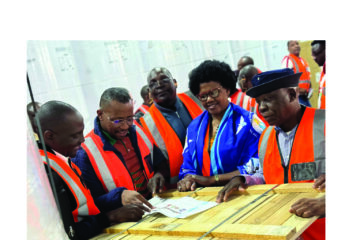Hertta-Maria Amutenja
The University of Namibia (Unam) is reducing its intake of education students to address the oversupply of education graduates in the job market.
This move, according to Unam spokesperson Simon Namesho, is part of a broader effort to align annual intakes with the teacher demand and supply model.
“We have shifted focus away from oversupplied areas like lower and junior primary education and towards areas of teacher scarcity like Namibian languages,” explained Namesho.
He added that, in addition to reducing intakes, Unam has raised its admission requirements to improve the quality of its graduates.
“For the secondary education program, we ask for 30 points with higher subject grades at AS Level,” Namesho explained.
These changes, he said, are aimed at ensuring that graduates are better equipped and more competitive in the job market.
In April alone, approximately 4 400 students graduated from UNAM, with an additional 2 243 graduating from the Namibia University of Science and Technology (NUST).
A petition to education director Isak Hamatwi in November 2023 revealed that, despite the high number of graduates, an estimated 8 000 qualified teachers remained unemployed between 2017 and 2023.
Namesho emphasised the need for a national regulatory framework to set quotas for all institutions involved in teacher education.
“What is required is a national regulatory framework that sets quotas for all institutions that are in the teacher education market, especially those operating inside the country,” he said.
The International University of Management (IUM) has also addressed the issue of oversupply, highlighting that the core problem lies in school overcrowding rather than merely the number of graduates.
IUM spokesperson, Gerry Munyama suggested adjustments to the learner-teacher ratio.
“There is overcrowding in schools. One way in which education authorities can try to manage this problem is to make adjustments to the learner-teacher ratio. Another solution could be double shift training, where some learners attend in the morning and others in the afternoon, effectively requiring two sets of teachers,” he said.
Oshamukweni Combined School principal Werner Nangolo noted the bureaucratic process of filling vacancies and suggested that universities should consider reducing their intakes to alleviate market saturation.
“Maybe universities need to take a break from intake because the market is so saturated,” he suggested.
Former Minister of Mines and Energy and former teacher, Isak Katali advocated for job analysis and planning, proposing that institutions limit their intake levels to align training with actual demand.
“Perhaps institutions should limit their intake levels and focus on training the necessary number of teachers to meet demand,” he said.
Gertrud Amutenja, a retired teacher who graduated in 1976, underscored the importance of adjusting intake levels to match population growth and school demand.
“Finding a job after graduation was not difficult for me. There were so many vacancies at so many different schools. However, today’s graduates face challenges due to oversaturation. Institutions need to regulate their intake levels to address this issue,” she emphasised.
The recent graduation figures further highlight the issue of oversupply.




